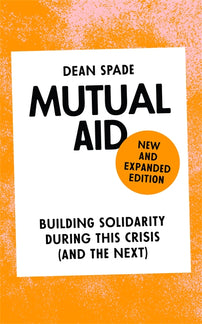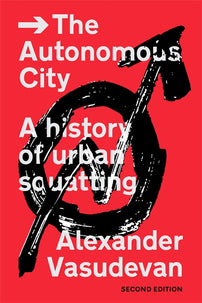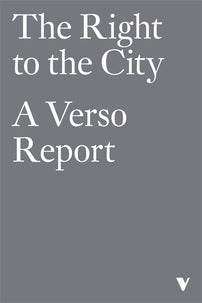From Churches to Lifehouses
Adam Greenfield, author of Radical Technologies, makes a radical proposition of what to do with the thousands of empty churches in the UK and US. Lifehouses can become the centre of a radical reimagining of what makes a community, and where it comes together.

I can only suppose it was intentional that Simon Jenkins chose to dedicate his Easter weekend column in the Guardian to the decline of organized Christian religion in these isles — and if so, fair shout, I guess. What’s curious, though, is that he devotes most of his space to exploring what is surely one of the less obvious consequences of this decline, which is the opportunity it presents us to repurpose under utilized churches, and restore them to active benefit of the communities around them. And what surprises me about his proposal, given how very much daylight there is between his understanding of the world and my own, is how strongly I agree with it.
What preoccupies Jenkins in his Eastertide offering are the 51,000-odd church buildings scattered across the land — each of them generally “the most prominent, not to mention magnificent, building in almost every English town and village” — and what becomes of them in a time when the profession of Christian faith is in precipitous decline. His primary worry seems to be that, with neither an active congregation to care for them nor meaningful links to the lives unfolding around them, these buildings face abandonment, decrepitude and eventual collapse into terminal disrepair, even as the communities they’re embedded in still have want of the functions they once served.
Long story short, Jenkins thinks there’s life in them yet. His argument starts from the observation that throughout history, “these buildings have offered their publics ceremony and memorial, peace and meditation, charity and friendship, quite apart from faith,” but that modern communities, by contrast, often lack a place in which they might pursue these very ends. And this is where he perceives the opportunity: church buildings, he says, “must be wholly or partly seculari[z]ed” and repurposed, not merely to fill “the gaps in an increasingly dilapidated welfare state” but to “reconnect them to the surrounding communities from which the decline in worship has distanced them.”
[book-strip index="1"]
And there’s a lot to this notion. Jenkins, firstly, is absolutely right that communities need places to observe the rituals of lifestage and season that bind us together, without any requirement that those observations invoke the transcendent or supernatural. Such regularly reinscribed ceremonies are a considerable part of how we invest places with meaning, and there is no reason why church buildings, suitably desacralised, cannot serve that purpose into the indefinite future, as parish churches have done in this land since time immemorial.
He’s also right to observe that church buildings often support institutions that are vital to the wellbeing of the local community — to see the truth of this, one only needs to note how many of the community-based mutual aid efforts we so often turn to now in times of crisis, to fill in the gaps of state and private provision that otherwise leave us cruelly exposed to turns of fortune, happen to be colocated with a church, mosque or gurdwara.
Jenkins has, however, missed a trick. When I think about all the under-utilized houses of worship scattered around the land, what jumps out at me is how well-suited they are to provide an entirely new set of distributed infrastructural capacities demanded by our age of climate system collapse. In fact, his column reminded me of an idea I’ve been nurturing for the past decade or so now, going all the way back to Occupy Sandy, taking in my enduring love for Clifford Harper’s mid-1970s ”Visions" illustrations, and building on lessons learned in the course of my partner’s work with our neighborhood food hub.
Here’s the crux of it: local communities should assume control over underutilized churches, and convert them to Lifehouses, facilities designed to help people ride out not merely the depredations of neoliberal austerity, but the still-harsher circumstances they face in what I call the Long Emergency, the extended period of climatic chaos we've now entered. This means fitting them out as decentralized shelters for the unhoused, storehouses for emergency food stocks (rotated through an attached food bank), heating and cooling centers for the physically vulnerable, and distributed water-purification, power-generation and urban-agriculture sites capable of supporting the neighborhood around them when the ordinary sources of supply become unreliable. The fundamental idea of the Lifehouse is that there should be a place in every three-to-four city-block radius where you can charge your phone when the power’s down everywhere else, draw drinking water when the supply from the mains is for whatever reason untrustworthy, gather with your neighbors to discuss and deliberate over matters of common concern, organize reliable childcare, borrow tools it doesn’t make sense for any one household to own individually, and so on — and that these can and should be one and the same place. As a foundation for collective resourcefulness, the Lifehouse is a practical implementation of solarpunk values, and it’s eminently doable. Formally, the infrastructural services I imagine Lifehouses offering are distributed, as opposed to centralized, which makes them robust to the kind of grid failure we've been experiencing more and more often. In Ours To Lose, Amy Starecheski’s wonderful social history/ethnography of squatting on New York’s Lower East Side, she tells the story of the electricity-generating stationary bicycle set up on the sidewalk outside C-Squat at E 10th Street and Avenue C, which supplied power to a bank of phone chargers during the extended outages that followed Superstorm Sandy.
[book-strip index="2"]
The entire community gathered around, at first simply to top up their phones, but later because that's where the people were. Over these days and weeks, the sidewalk in front of C-Squat was simply the most obvious place for people experiencing a sharp and relatively sudden disruption to seek out useful information, the comfort of fellowship, and vital material support.
This is the model I have in mind for Lifehouse-as-community-infrastructure: when the grid goes down, or the water from the pipes isn’t safe to drink, every cluster of a hundred or so households has a place it can go to fulfil its basic needs, on multiple levels at once.
Many of us will have more and more need of places like this, as the long-term process of intentional disinvestment geographers like David Harvey and Ruth Wilson Gilmore call “organized abandonment” increasingly intersects with the unfolding reality of climate system collapse, and the complex systems we rely upon to undergird everyday life prove to be far more contingent than we’d ever understood them to be. Again, though, the value of such a place extends past the material to the psychic and affective.
If a Lifehouse can be somewhere to gather and purify rainwater, the hub of a solar-powered neighborhood microgrid, and a place to grow vegetables, it can also be a base for other services and methods of self-provision — a community workshop, a drop-in center for young people or the elderly, and a place for peer-to-peer modes of care like Cassie Thornton’s hologram to latch on. It can be all of those things at once, provisioned and run by the people living in its catchment area. If mutual aid needs a site, and so does robustly participatory power, then that site should draw out and strengthen the connections between these ways of being in the world, as a way of seeing us through the Long Emergency together.
There's a kind of positive externality here, too. One of the problems that always vexes those of us who believe in the assembly, and similar deeply participatory ways of managing our communities, is that these types of deliberation are often a hard sell, for a great many reasons. Most of us are exhausted, for starters.
Our lives already hem us in with obligations, commitments, situations that require our presence and undivided attention. We may not always have the energy or the wherewithal to travel very far to "participate," even if we're convinced of the value of doing so. If the place of deliberation is right in our immediate neighborhood, though? And we happen to be going there anyway (to charge a phone, pick up the kids, return a borrowed dehumidifier, seek shelter from the heat, etc.)? Then the odds that any one of us will get meaningfully involved in the stewardship of these collective services increases considerably.
Just like the phone chargers on the table outside C-Squat, think of the infrastructural stuff as the "killer app," if you will: they’re the compelling proposition which enables everything else. And of course, in longer-established neighborhoods, there will often already be a building or physical site that organically serves many of these functions – the neighborhood’s naturally-arising Schelling Point, or node of unconscious coordination. Whether church, mosque, synagogue, union hall, high-school gym or public library, it will be where people instinctively turn for shelter and aid in times of trouble. What I believe our troubled times now ask of us is that we be more conscious and purposive about creating loose networks of such places, each of them provisioned against the hour of maximum need.
[book-strip index="3"]
The notion of a loose, federated network of Lifehouses presupposes that each be run by and for the people in a specific neighborhood or district, and that means that many of them will necessarily reflect distinctly local values. And that’s fine! That’s as it should be! But it also suggests that the network itself can maintain a set of stated values — primarily oriented toward inclusion, I’d think — that are arrived at consensually, and that local Lifehouses would have to observe these principles if they wanted to federate, and derive all the benefits that attend upon federation.
You can maintain whatever principles you like as a pragma, or local agreement, so long as they don’t come into conflict with the principles of the network. Your Lifehouse is strictly vegan? Observes Ramadan? Asks for a 1% tithe from businesses operating in its catchment basin? Go nuts – but do it as a pragma. Who has the standing to tell you how your community should show up for itself?
Happily, just about every neighborhood that’s been subjected to organized abandonment, and treated like a sacrifice zone under late capitalism, will have one or more underutilized structures perfectly suited to use as a Lifehouse. They belong to the category spatial researcher Samaneh Moafi calls ”negative commons”: places that have become available for collective use almost as a contemptuous afterthought, abandoned because they’ve lost all utility to capital. But that doesn’t mean they don’t retain the greatest utility for us, and we should grasp and make use of them. Meanwhile, virtually by definition, places where the market for land has cranked up property value to the level where there are no such underutilized facilities don’t have acute need for the things a Lifehouse does. They would appear to already be adequately cared for by the market, and most likely prefer it that way.
The rest of us, though? We will increasingly have need of places where we can come together — to care for ourselves and for one another, to decide from among the courses of action available to us, and to bolster our collective capacity across all of the many registers implicated by the rigors of life in this difficult new dispensation. And with building new structures increasingly unjustifiable on grounds of the enormous quantities of carbon released to the atmosphere in the process of doing so, there is a very strong argument for reclaiming the structures that already exist, at or close to the psychic heart of the places so many of us live, as homes for such gatherings. For my own part, I dream of helping to establish a network of Lifehouses, and of living to see the map dotted with them.





